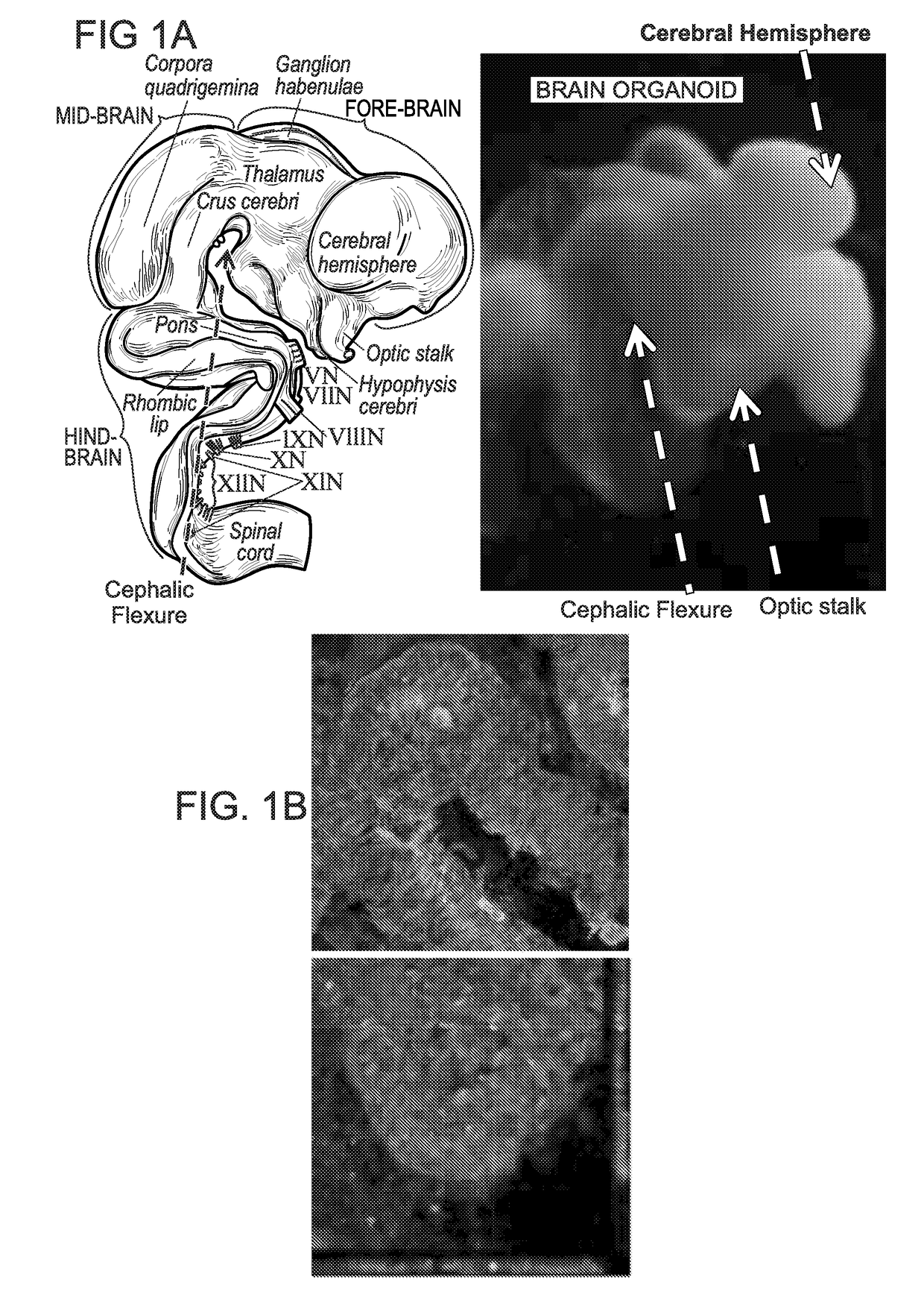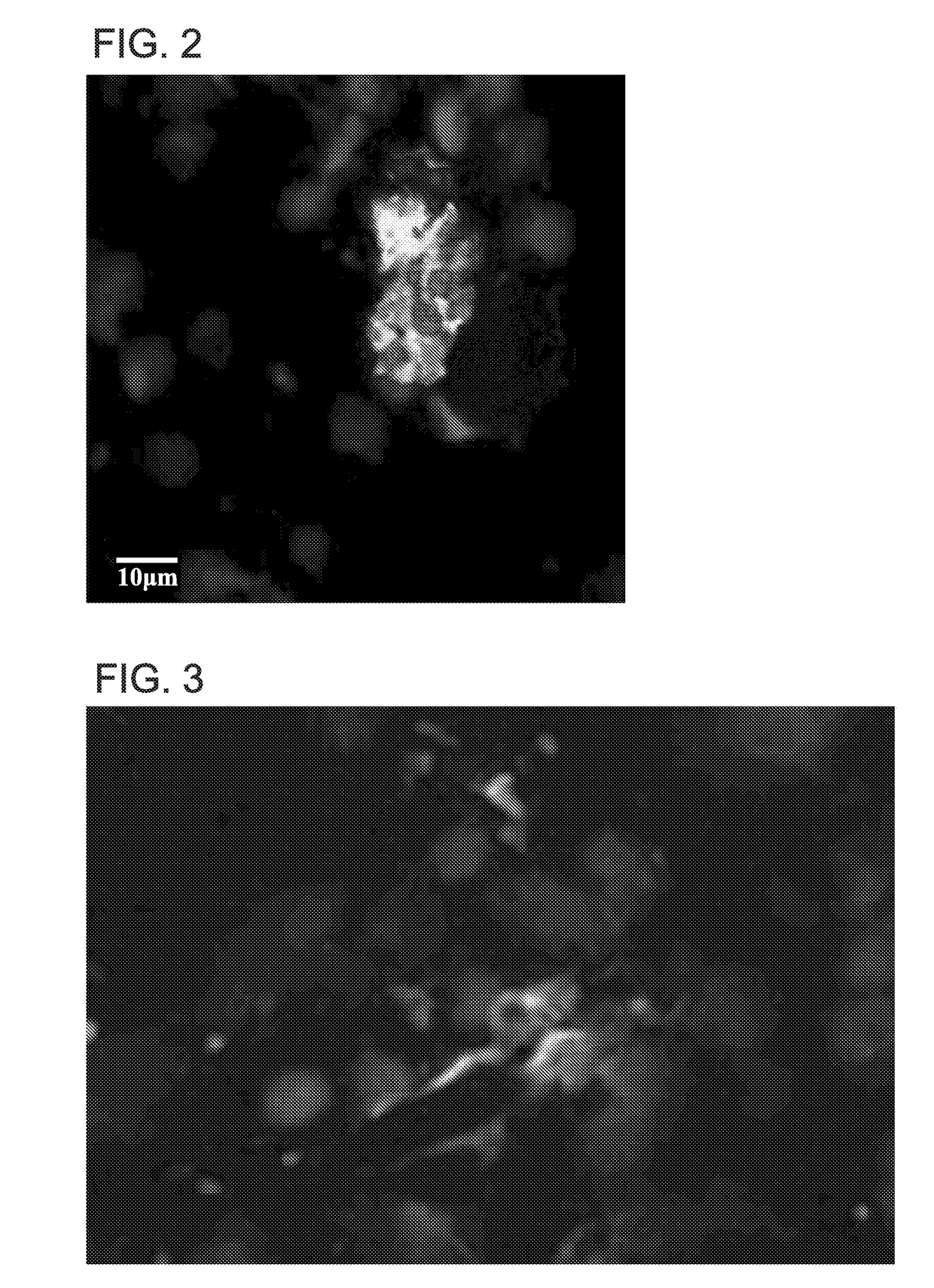A neural organoid composition and methods of use
- Summary
- Abstract
- Description
- Claims
- Application Information
AI Technical Summary
Benefits of technology
Problems solved by technology
Method used
Image
Examples
example 1
Generation of Human Induced Pluripotent Stem Cell-Derived Neural Organoids.
[0082]Human induced pluripotent stem cell-derived neural organoids were generated as follows.
Preparation of MEFs
[0083]Plate irradiated murine embryonic fibroblasts (MEFs) on gelatin coated substrate in MEF media at a density of 2×105 cells per well. Place the plate in the 37° C. incubator overnight.
Passaging Induced Pluripotent Stem Cells (iPSCs):[0084]Wash MEFs with prewarmed PBS. Replace media with 1 ml iPSC media / ROCK inhibitor per well.[0085]Remove the iPSC plate from the incubator. Feed iPSC cells with iPSC media. Using a sterile StemPro EZPassage tool, cut and resuspend the iPSC colonies. Gently resuspend cells, and divide and transfer to the MEF containing wells (1:1)
1. Making Embryoid Bodies (EBs):
[0086]Coat a 100 mm culture dish with 0.1% gelatin. Put in 37oC incubator for 20 minutes. Remove gelatin, and let the dish air dry in BSC till ready to use.[0087]Two wells of a 6 well plate should provide en...
example 2
Human Induced Pluripotent Stem Cell-Derived Neural Organoids Express Characteristics of Human Brain Development.
[0102]After ˜12 weeks in culture in vitro, transcriptomic and immunohistochemical analysis indicate that organoids generated according to the methods delineated in Example 1, contain cells expressing markers characteristic of neurons, astrocytes, oligodendrocytes, microglia, and vasculature (FIGS. 1-14) and all major brain structures of neuroectodermal derivation. Morpologically by bright field imaging, the organoids include readily identifiable neural structures including cerebral cortex, cephalic flexture, and optic stalk (Grey's anatomy text book). Their gene expression pattern is >98% concordant with those of the adult human brain reference (Clontech). They also express genes in a developmentally organized manner previously described (for the midbrain mescencephalic dopaminergic neurons, for example; Blaese et al., 2015). They also stain for multiple neural specific ma...
example 3
Tuberous Sclerosis Complex Model
[0178]Tuberous sclerosis complex (TSC) is a genetic disorder that causes non-malignant tumors to form in many different organs, including the brain. TSC strongly impacts quality of life because patients have seizures, developmental delay, intellectual disability and autism. Two genes have been identified that can cause tuberous sclerosis complex. The TSC1 gene is located on chromosome 9 and is called the hamartin gene. The other gene, TSC2, is located on chromosome 16 and is called the tuberin gene.
[0179]We have derived a human brain organoid from iPSC cells derived from a patient with a gene variant of the TSC2 gene (ARG1743GLN) from iPSCs (Cat# GM25318 Coriell Institute Repository, N.J.). This organoid serves as a genetic model of a tuberous sclerosis TSC2 mutant. Both normal and TSC2 mutant models were subject to genome wide transcriptomic analysis using the Ampliseq analysis to assess changes in gene expression and how well they correlated with kn...
PUM
| Property | Measurement | Unit |
|---|---|---|
| Time | aaaaa | aaaaa |
| Time | aaaaa | aaaaa |
| Volume | aaaaa | aaaaa |
Abstract
Description
Claims
Application Information
 Login to View More
Login to View More - R&D
- Intellectual Property
- Life Sciences
- Materials
- Tech Scout
- Unparalleled Data Quality
- Higher Quality Content
- 60% Fewer Hallucinations
Browse by: Latest US Patents, China's latest patents, Technical Efficacy Thesaurus, Application Domain, Technology Topic, Popular Technical Reports.
© 2025 PatSnap. All rights reserved.Legal|Privacy policy|Modern Slavery Act Transparency Statement|Sitemap|About US| Contact US: help@patsnap.com



